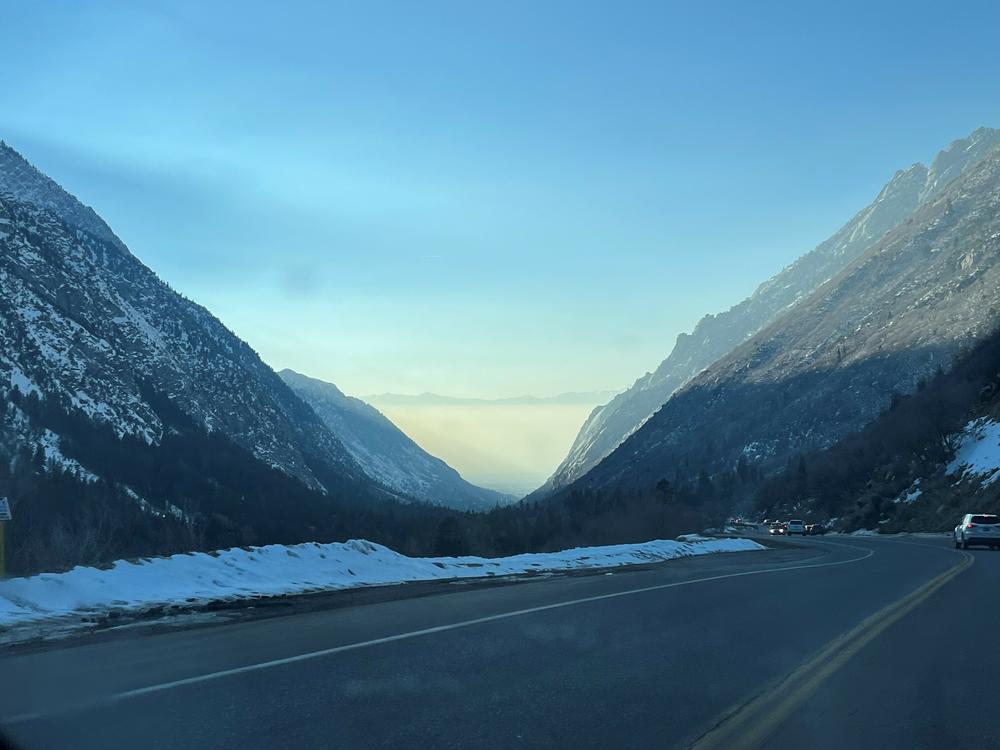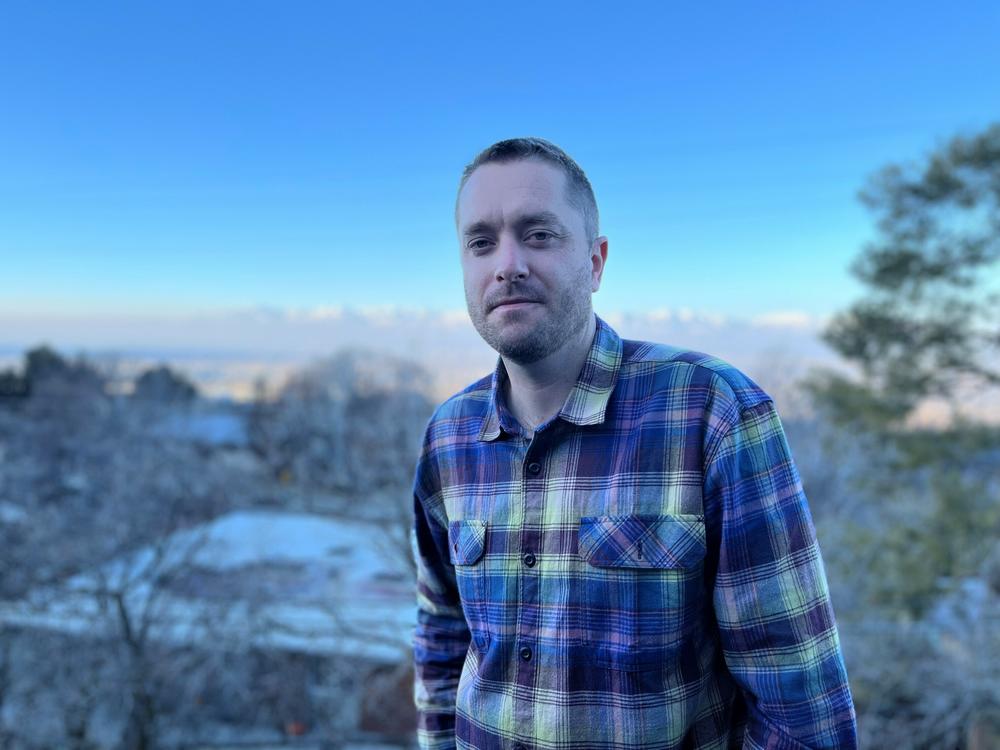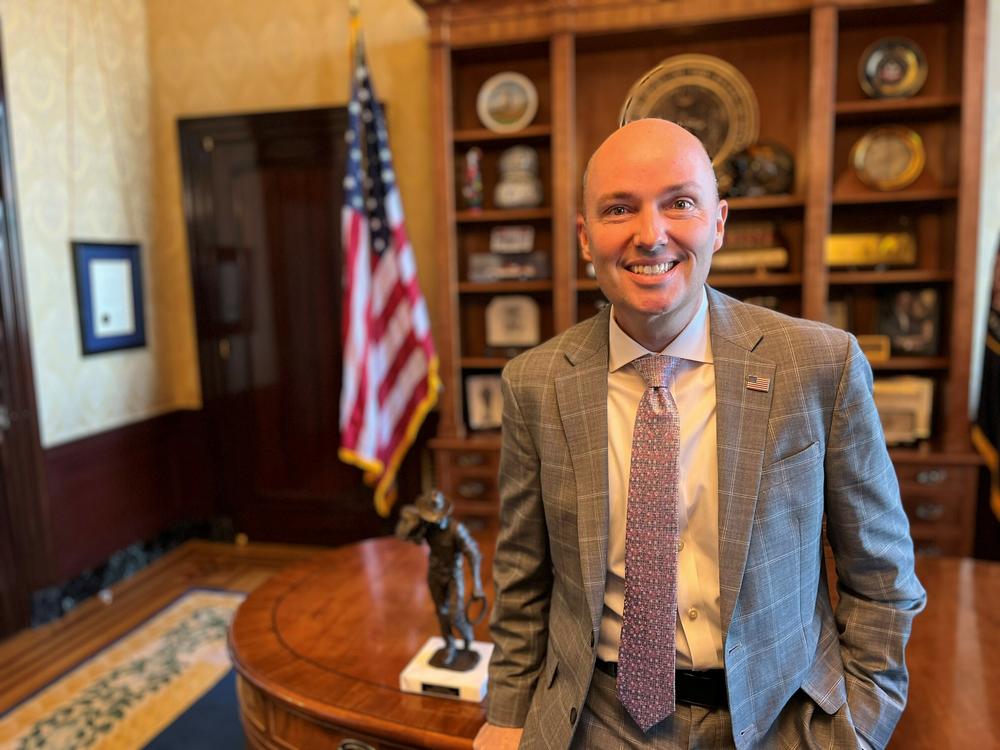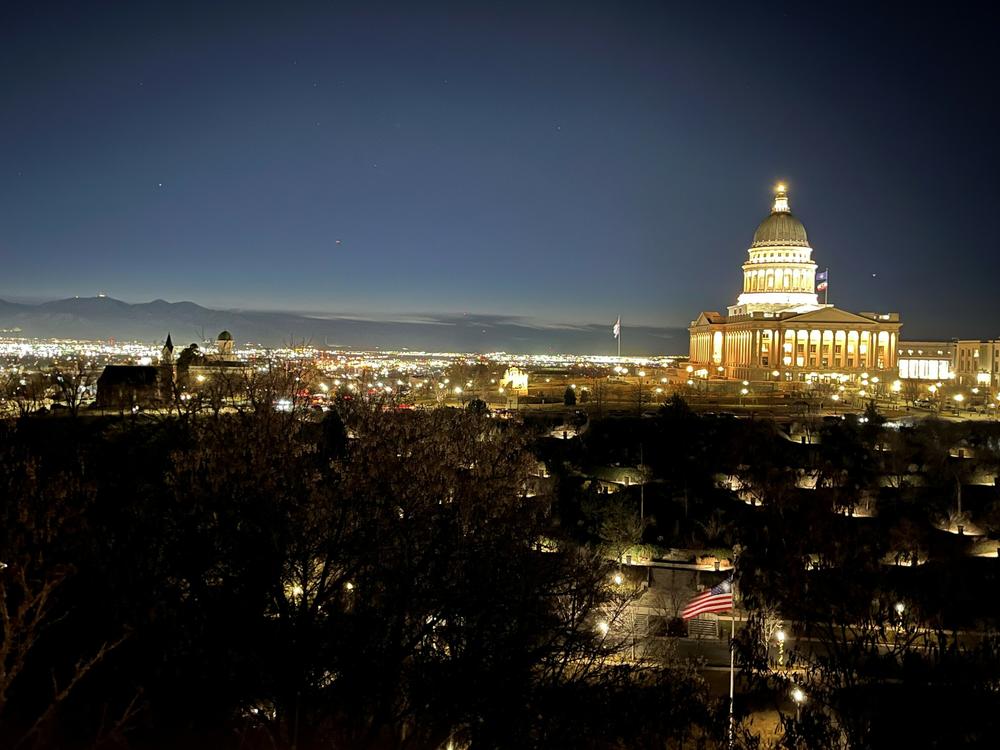Section Branding
Header Content
Utah is pushing back against ever-tightening EPA air pollution standards
Primary Content
SALT LAKE CITY, Utah — When it comes to its chronically poor winter air, Salt Lake City already has topography working against it. Steep mountain ranges on either side of the city create a giant bowl, where dreaded winter temperature inversions trap cold air that stagnates with dust, factory smoke, and diesel exhaust from the city's expanding web of freeways.
At least a million people have moved to the valley since 2000, and the air on some days looks — and actually can be — dirtier than Mexico City's.
That makes Dr. Tom Nelson cringe. Nelson, who grew up here, manages the emergency room at one of Utah's largest hospitals. And on bad air days, they see admissions go up for respiratory illnesses and even heart attacks.
"You'll feel it in your throat and in your lungs, you'll feel it stinging your eyes," he says. "You can't avoid it."
Lately, Nelson and others worry about an additional threat: dust storms stirring up toxins off the shrinking Great Salt Lake blowing east into the city.
This week the Biden administration unveiled new, stricter standards for air pollution that haven't been updated in more than a decade as part of a national push to crack down on cities with chronically bad air. Salt Lake City is among the targets as it's long strong struggled with pollution in the winter, though increasingly now in the summer, too.
"It's been an issue forever," Nelson says. "But with a booming population and industry and exhaust, and now the potential for these dust storms from the Great Salt Lake, we're making a known problem much, much worse."
Salt Lake's air may actually be getting cleaner
There is mounting pressure to fix this problem, especially with Salt Lake City poised to again host the winter Olympics, and as more out of state transplants move here unaware of the notorious winter pollution.
"It's totally understandable, you look out your window and you see that [haze]," says Glade Sowards, program coordinator at the Utah Division of Air Quality. "What I can say is there is just quite a lot that's going on."
Sowards says regulators are scrambling to show how they'll finally come into compliance with federal standards for fine particulate matter and ozone pollution — the first deadline is late next year. If they continue in "non-attainment," Utah could lose federal highway money.
"The good news is through our monitoring, we're showing marked progress in particulates and we're hoping to see the same thing with ozone," Sowards says. "But there are still some challenges there."
Sowards' team is also finalizing a voluntary emissions reduction plan that includes things like electric vehicle incentives and energy retrofits for businesses. It's on the fast track, due by March first, as the money would come from President Biden's Inflation Reduction Act.
Utah's conservative leaders are pushing back against the feds
But this is the West, where states like Utah have complicated if sometimes contradictory relationships with federal money.
Even as Utah is vying for IRA funds, state lawmakers just passed a new law that aims to give state agencies the power to ignore federal rules on things like air pollution, should the legislature find them overreaching.
Republican state Sen. Scott Sandall sponsored the Utah Constitutional Sovereignty Act, signed by the governor last week.
"Right now the balance is all coming down on a bureaucrat or bureaucracy saying we know what's good for your health," Sandall says. "We're not going to take into account what's good for your economy at all. But we're gonna come in and we're gonna be your health doctor."
Republican leaders are particularly frustrated over new tighter ground level ozone rules in recent years. They say Utah will never be able to comply with them because increasingly the pollution and haze in the summer is coming from regional wildfire smoke.
"We do have federal bureaucracies that are making rules that get a little fuzzy outside of what Congress is passing," Sandall says.
Utah recently lost a legal battle with the Biden administration over a rule regulating pollution from coal plants that blows into other states, in this case over neighboring Colorado.
In an interview, Republican Gov. Spencer Cox said in Utah, it's possible to balance a healthy environment and economy.
"The pollution is getting better," Cox said. "Our air is cleaner now than it's been in fifty years."
That's true, but Utah has still been in and out of compliance with federal air pollution standards since 2006.
"A lot of people that move here think 'wow, the air is terrible.'" Cox says. "It will always be this way. The Native Americans called it the valley of smoke during inversion season."
Still many threats lie ahead
But Cox's own environmental agency warned in a report late last year that climate change and toxic dust off the drying Great Salt Lake could reverse recent air pollution gains.
All of this is personal for Dr. Tom Nelson, who is also a board member with the group Utah Physicians for a Healthy Environment.
His four year old son has to be hospitalized often on bad air days due to pre-existing health problems. And the illnesses seem to get worse when the Salt Lake Valley is cloaked in a winter inversion.
From his hillside home on the first day of a high pressure system, he's pointing out the faint silhouettes of the towering, snow capped Wasatch Mountains in the haze. To the West, it's nearly impossible to see the giant saline Great Salt Lake past the downtown skyline.
"As you look out to that valley right now and you see how disgusting that is, this is not an exceptional day," Nelson says. "This is becoming more and more frequent."
Nelson says it's gotten to the point where he and his wife have started considering the possibility of leaving his hometown, and moving to a place with cleaner air if things don't improve dramatically soon.
Bottom Content







